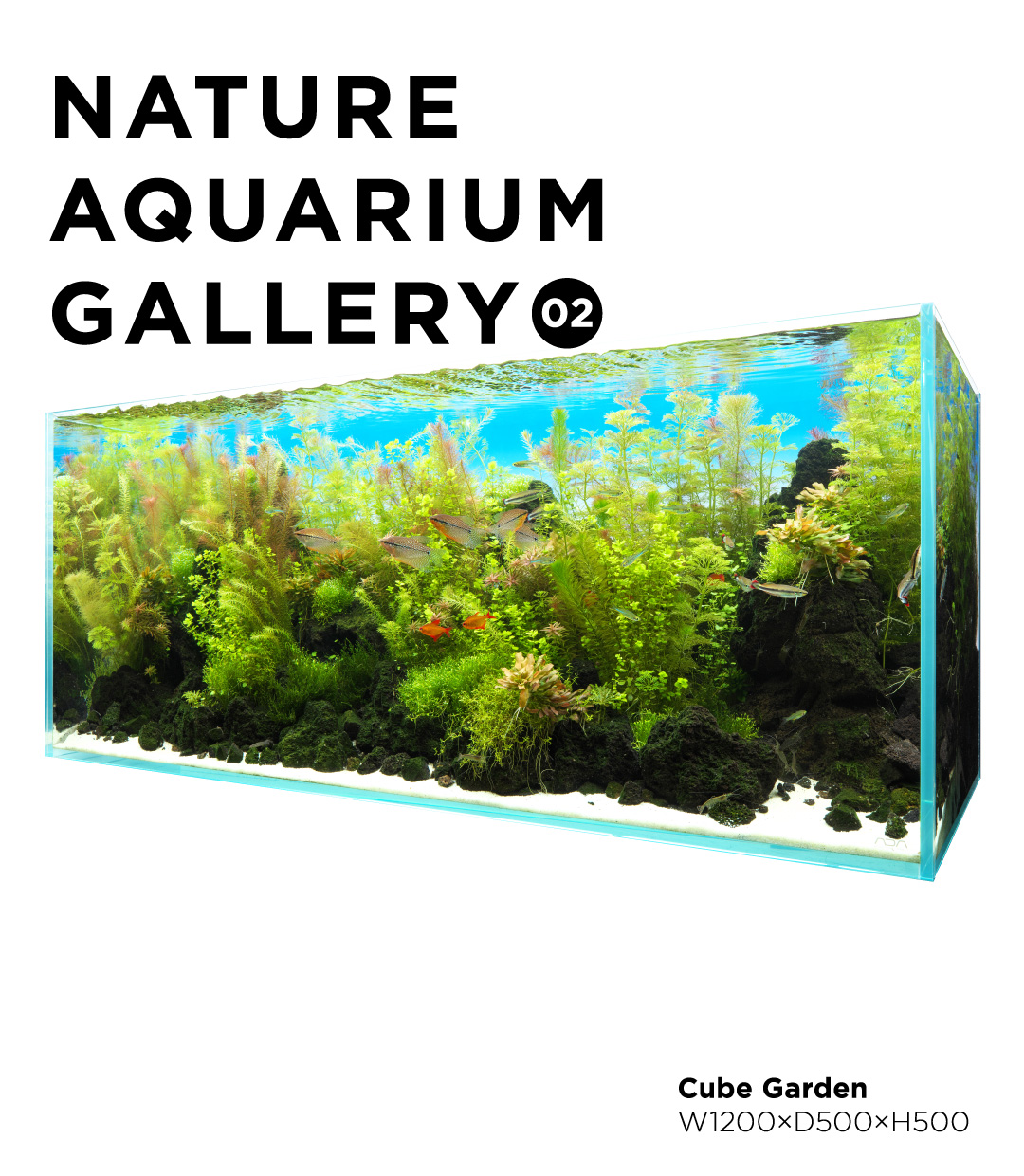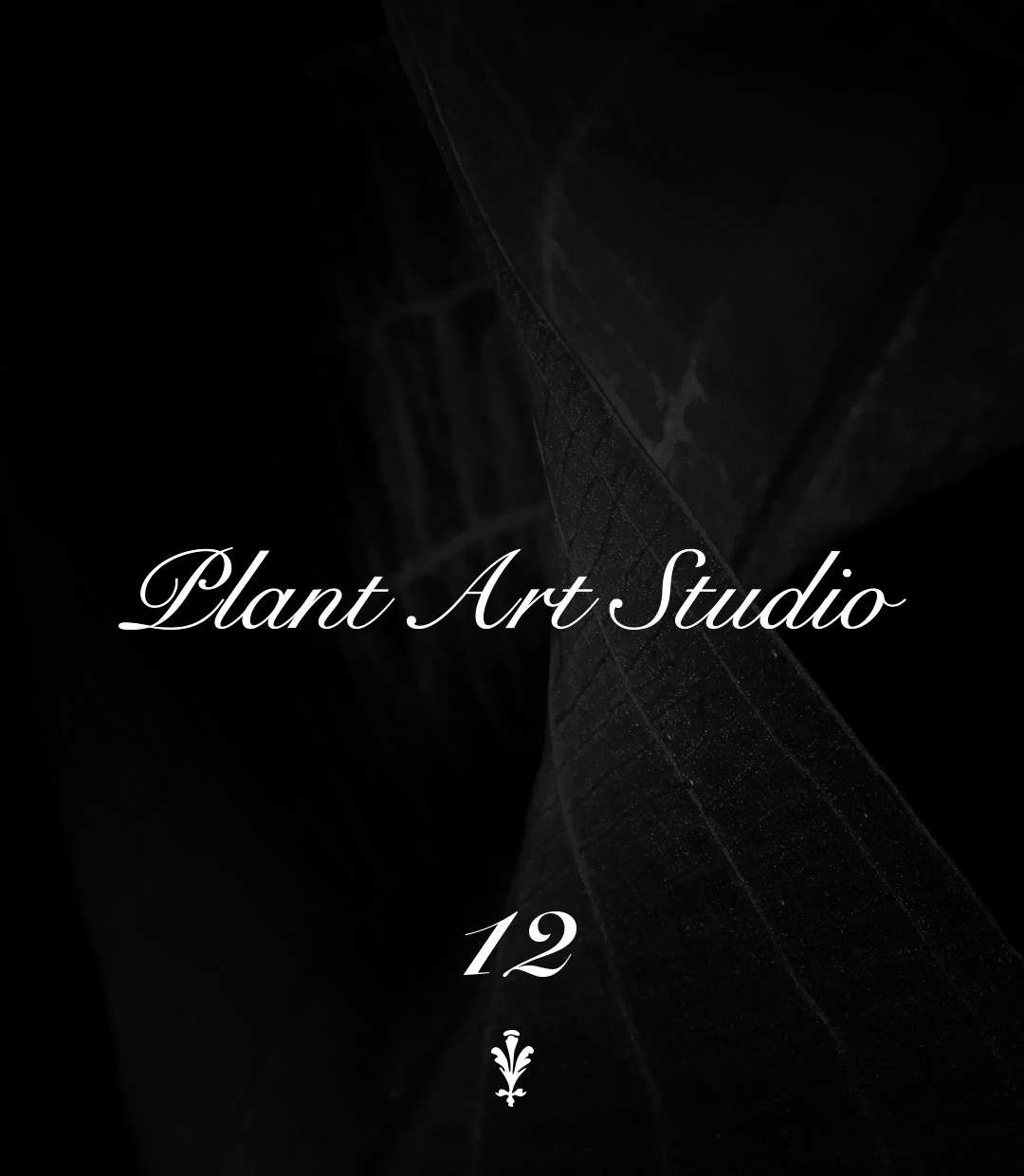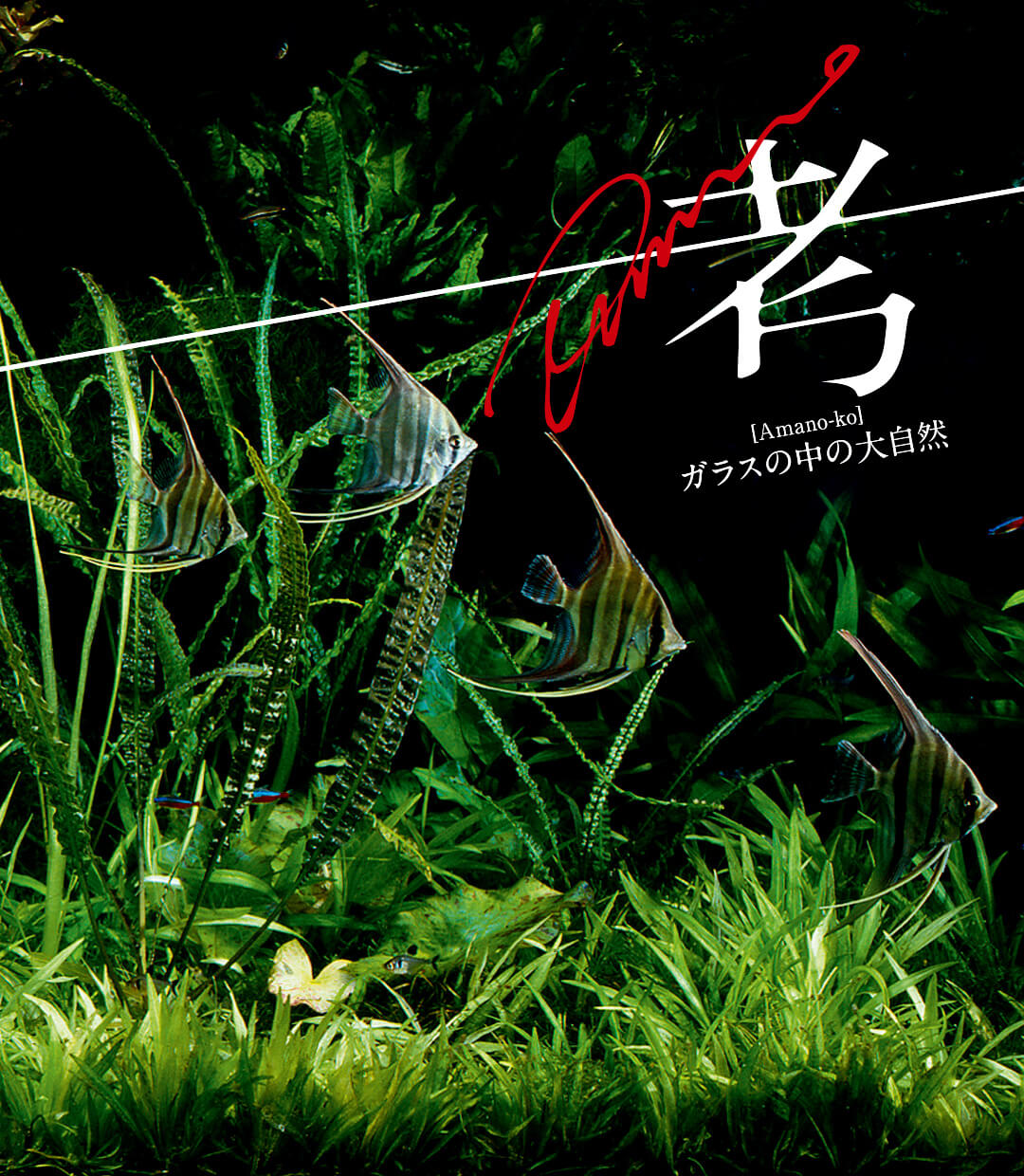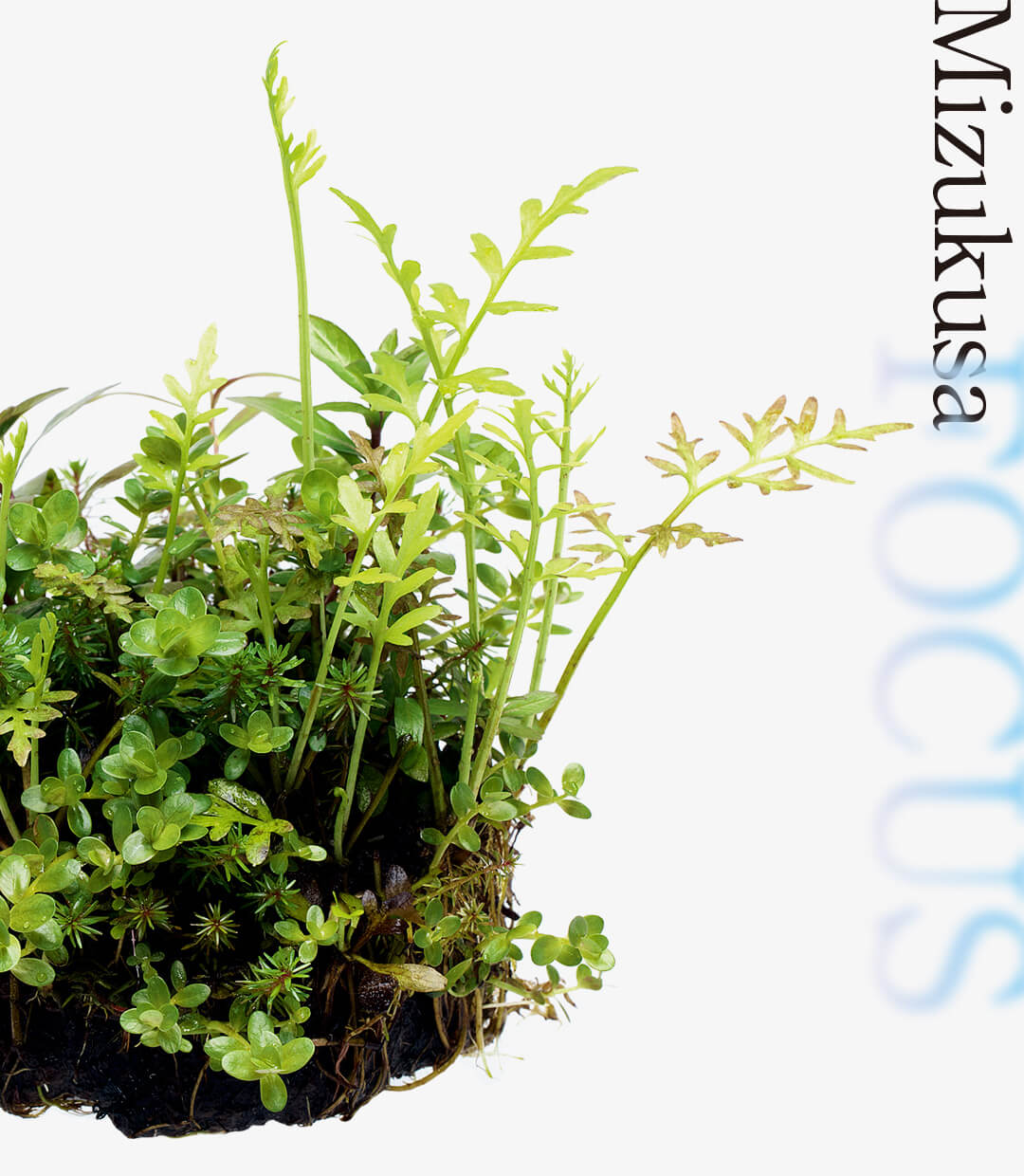PRODUCTS 2022.04.15
Moss Picture Book
At first glance, all species of moss can look the same. But in fact, there is a wide variety, and each species has interesting characteristics if you observe it up close. Moss are shade-loving plants full of profound charms. We will introduce 14 moss species and optimal goods depending on how each moss takes root.
●…Moss Cotton is recommended.
●…Terra Line is recommended.
●…Riccia Line is recommended.
●…Moss Cotton is recommended.
●…Terra Line is recommended.
●…Riccia Line is recommended.
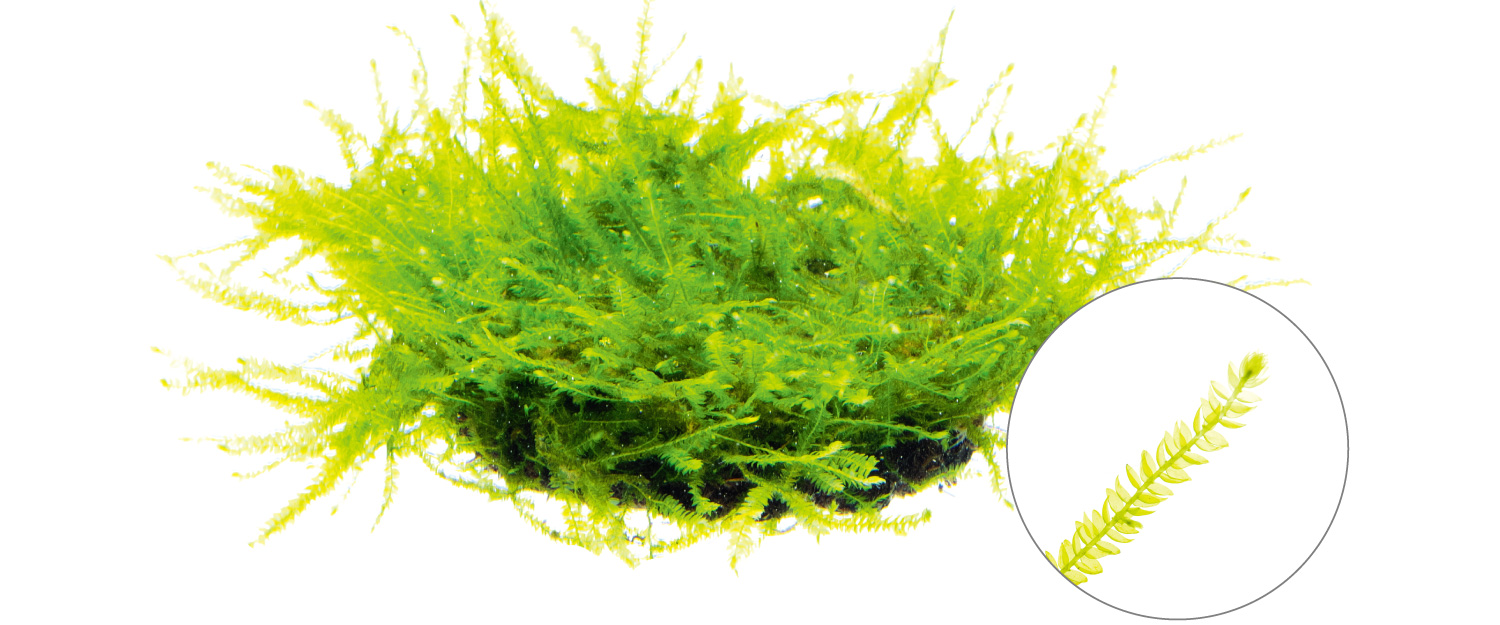
●Taxiphyllum barbieri
Taxiphyllum barbieri is a classic moss species in Nature Aquarium. Although there are several species that are called by the same name, this species is classified into the Taxiphyllum genus. We suggest that you wind it with Moss Cotton that is familiar in Nature Aquarium.
Taxiphyllum barbieri is a classic moss species in Nature Aquarium. Although there are several species that are called by the same name, this species is classified into the Taxiphyllum genus. We suggest that you wind it with Moss Cotton that is familiar in Nature Aquarium.
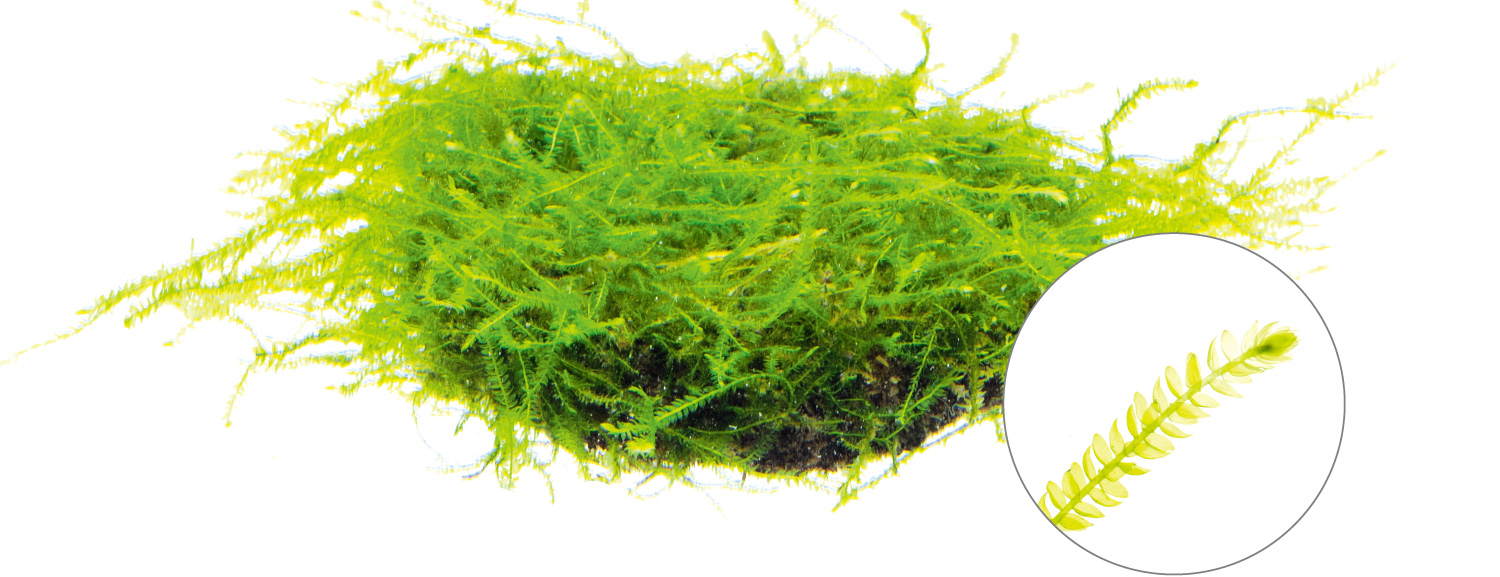
●Taxiphyllum sp. ‘Spiky Moss’
Taxiphyllum sp. ‘Spiky Moss’ is in the same Taxiphyllum genus as Taxiphyllum barbieri. It grows fast and has strong vitality. Because it branches well and spreads leaves while overlapping, it is likely to grow thick. Overall, it has a spiky look because of the pointy shape.
Taxiphyllum sp. ‘Spiky Moss’ is in the same Taxiphyllum genus as Taxiphyllum barbieri. It grows fast and has strong vitality. Because it branches well and spreads leaves while overlapping, it is likely to grow thick. Overall, it has a spiky look because of the pointy shape.
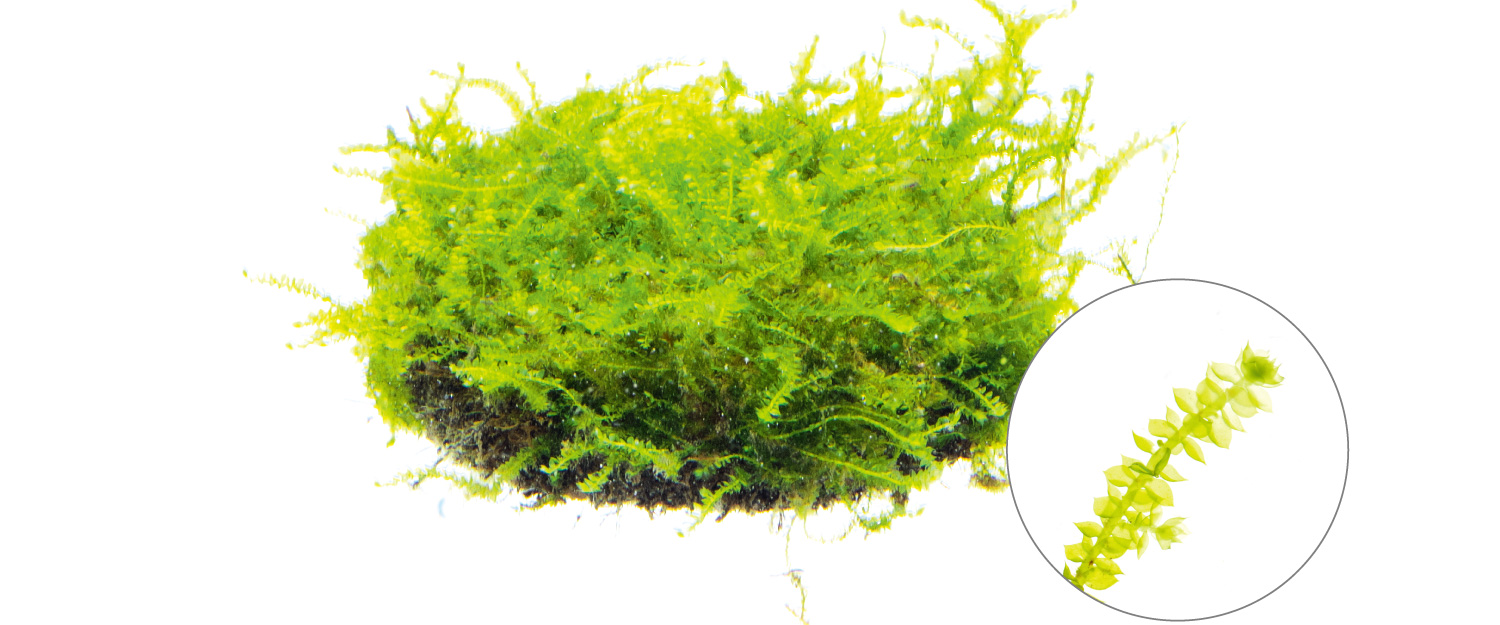
●Taxiphyllum sp. ‘Peacock Moss’
Taxiphyllum sp. ‘Peacock Moss’ is characterized by its light green leaves. Because aquascapes with this moss don’t become too dark even if you use extensively, it matches well with a cluster of bright stem plants. It is a hardy species among aquatic mosses, and when it grows, it forms triangular foliage like Vesicularia sp.
Taxiphyllum sp. ‘Peacock Moss’ is characterized by its light green leaves. Because aquascapes with this moss don’t become too dark even if you use extensively, it matches well with a cluster of bright stem plants. It is a hardy species among aquatic mosses, and when it grows, it forms triangular foliage like Vesicularia sp.
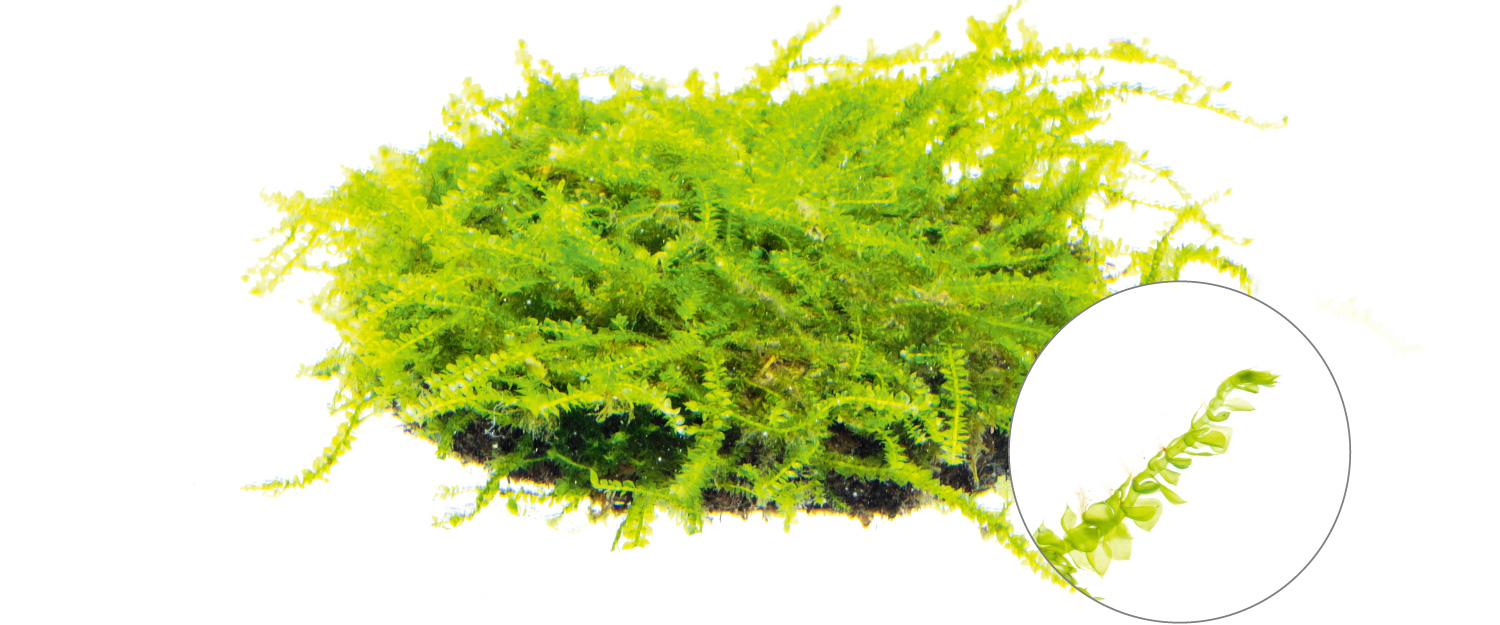
●Vesicularia montegnei
There are many species that are distributed under the same name. But the characteristic of this species is that it becomes an acute-angled isosceles triangle shaped. It is relatively resistant to dryness. Therefore, we recommend that you use Terra Tape and utilize the moss to connect between the underwater and open areas.
There are many species that are distributed under the same name. But the characteristic of this species is that it becomes an acute-angled isosceles triangle shaped. It is relatively resistant to dryness. Therefore, we recommend that you use Terra Tape and utilize the moss to connect between the underwater and open areas.
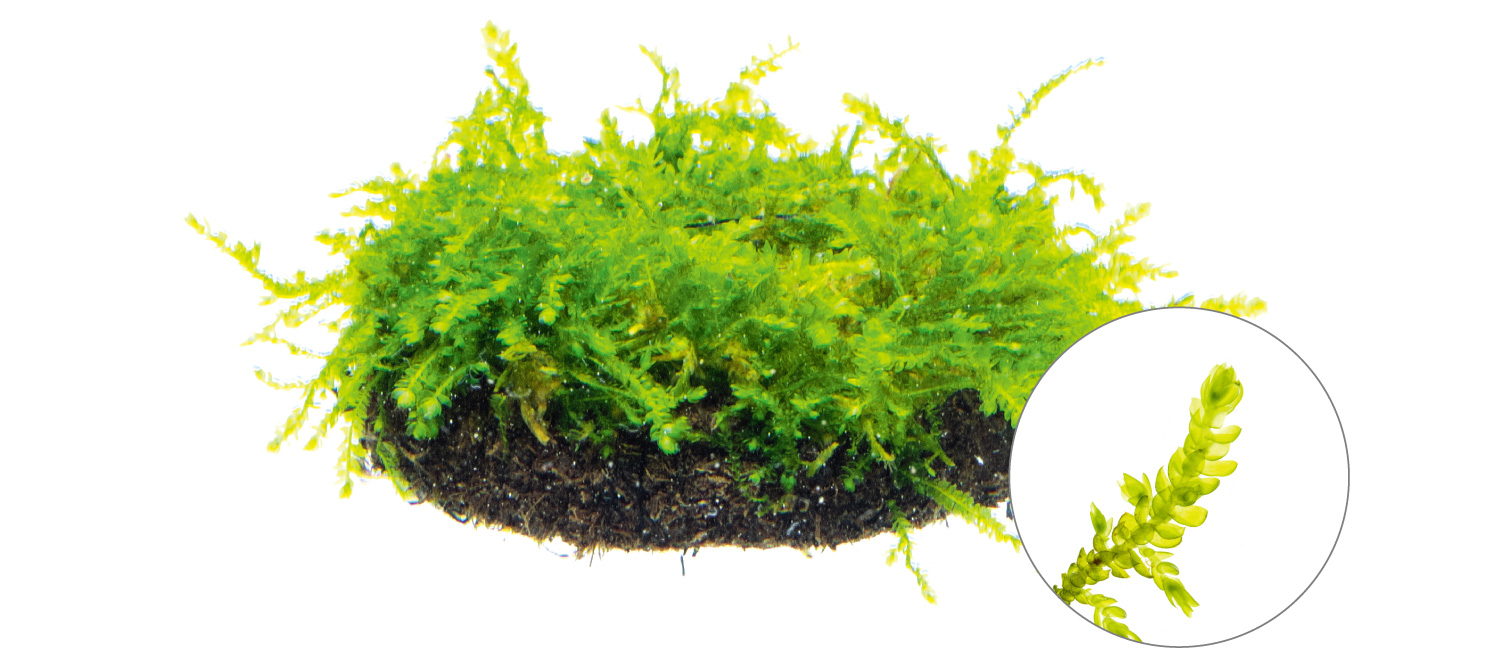
●Visicularia ferriei
Visicularia ferriei grows like weeping while crawling. Since it develops leaves densely toward the tips of the stems, it looks heavy. Because it goes well with driftwood, how about using it to create a dense forest layout?
Visicularia ferriei grows like weeping while crawling. Since it develops leaves densely toward the tips of the stems, it looks heavy. Because it goes well with driftwood, how about using it to create a dense forest layout?
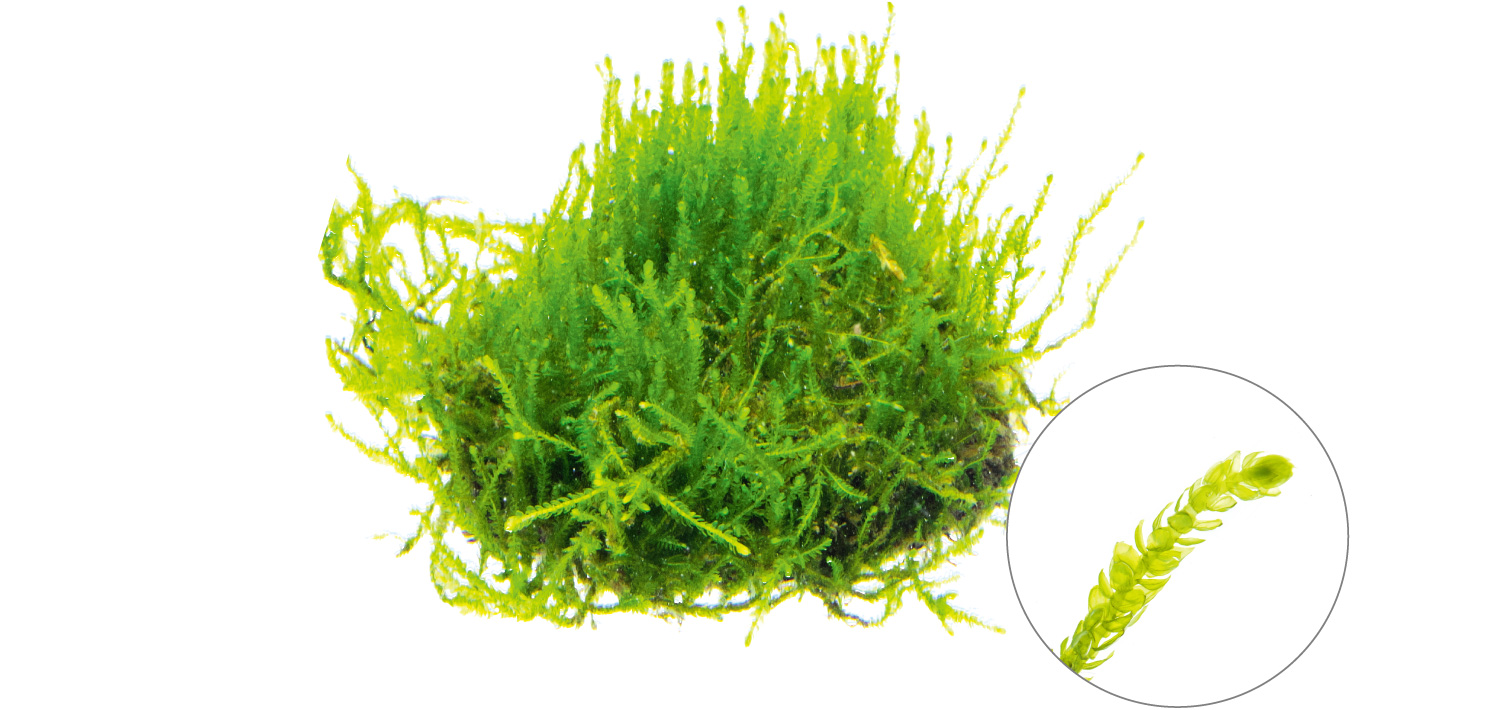
●Taxiphyllum sp. ‘Flame Moss’
As the name, Taxiphyllum sp. ‘Flame Moss’ suggests, it develops cormus like flame. The way it takes root on driftwood has the appeal that motivates us for creating layouts. Because it takes time to take root, wind it with Terra Line.
As the name, Taxiphyllum sp. ‘Flame Moss’ suggests, it develops cormus like flame. The way it takes root on driftwood has the appeal that motivates us for creating layouts. Because it takes time to take root, wind it with Terra Line.
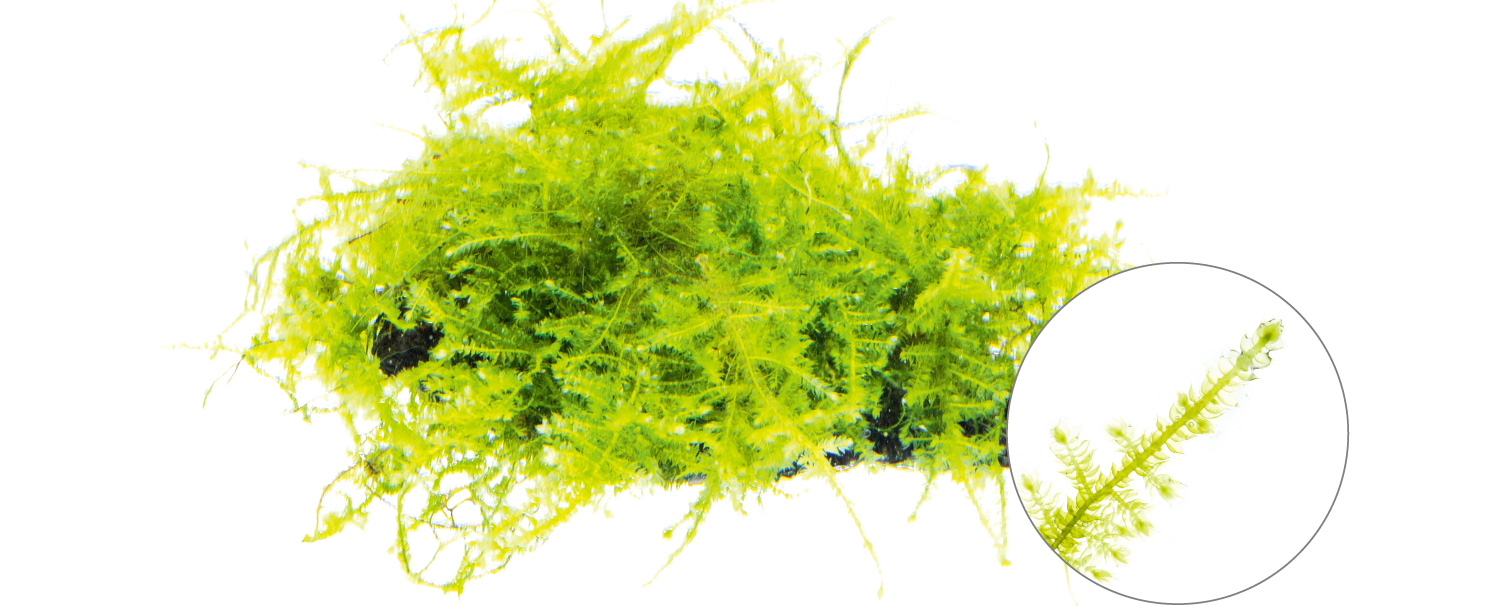
●Vesicularia dubyana
Vesicularia dubyana forms cormus while expanding widely in a triangle. It goes well with both stones and driftwood, and the fully grown look is breathtakingly beautiful. However, the appropriate amount of added CO2 and light is necessary.
Vesicularia dubyana forms cormus while expanding widely in a triangle. It goes well with both stones and driftwood, and the fully grown look is breathtakingly beautiful. However, the appropriate amount of added CO2 and light is necessary.
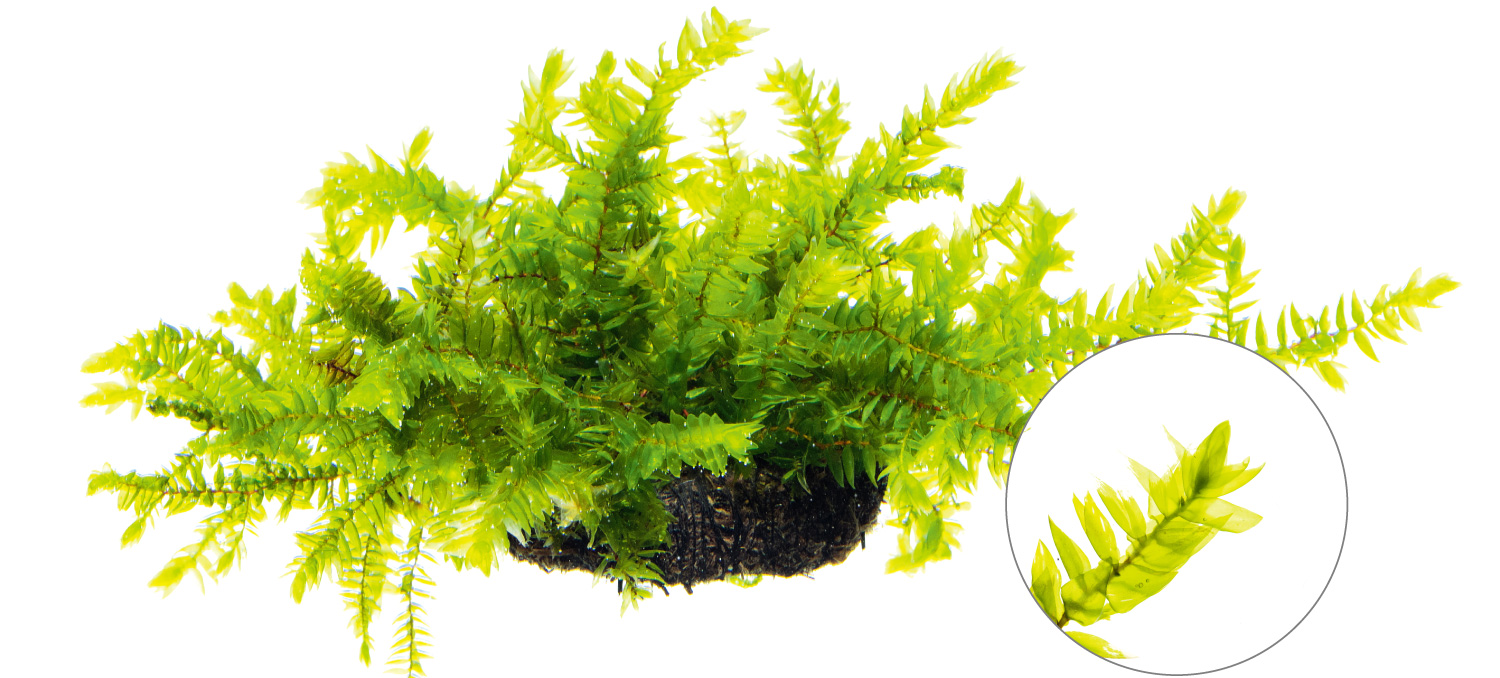
●Fontinalis sp.
Fontinalis sp. is a unique moss with red stems and lanceolate leaves. It is known as a large species. Because it takes time to take root, make sure to fix it firmly with Terra Line. It is a relatively newly introduced newcomer from Fontinalaceae.
Fontinalis sp. is a unique moss with red stems and lanceolate leaves. It is known as a large species. Because it takes time to take root, make sure to fix it firmly with Terra Line. It is a relatively newly introduced newcomer from Fontinalaceae.
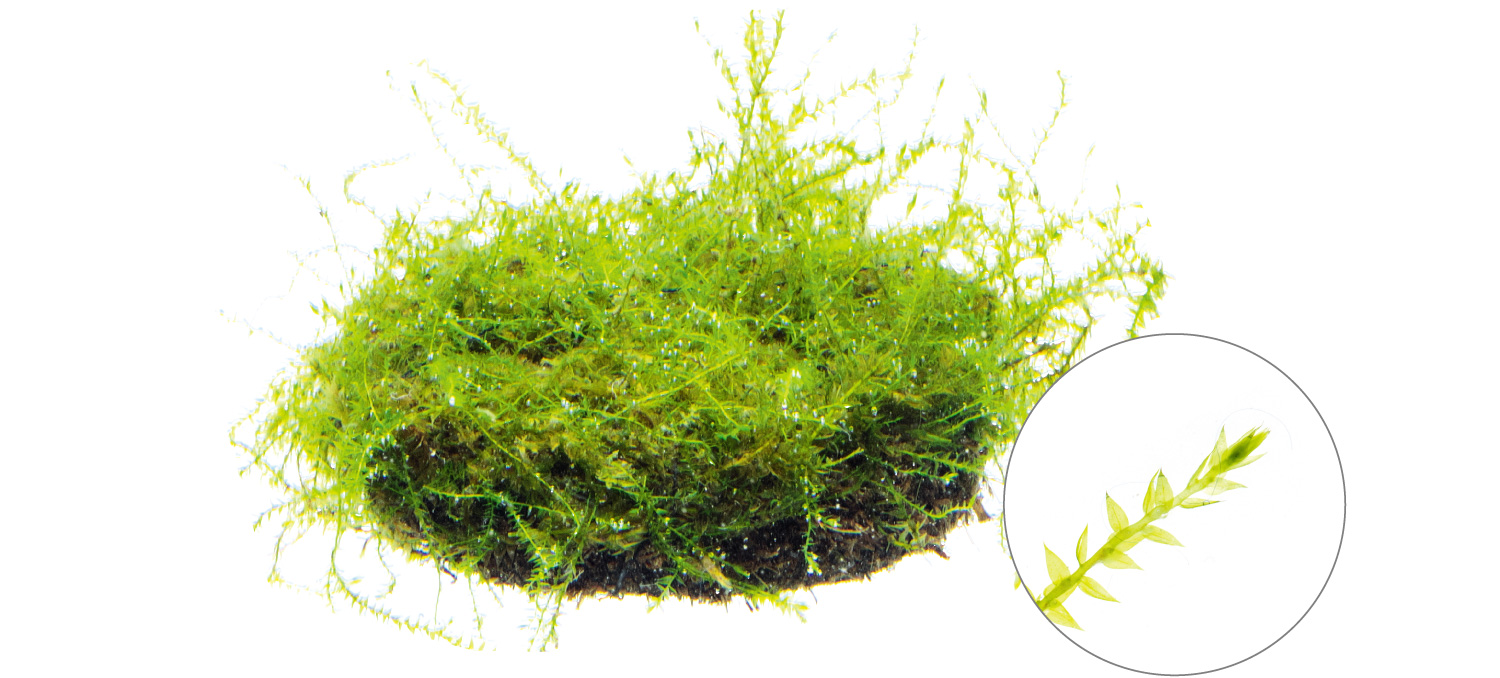
●Amblystegium riparium
It is also known as Stringy Moss. If you adjust the CO2 and illuminance, it forms countless air bubbles on slender cormus. And when it comes to its beauty, there is little to choose between Amblystegium riparium and Riccia fluitans. Since it has a strong rooting ability and grows well, we recommend that you use Moss Cotton for it.
It is also known as Stringy Moss. If you adjust the CO2 and illuminance, it forms countless air bubbles on slender cormus. And when it comes to its beauty, there is little to choose between Amblystegium riparium and Riccia fluitans. Since it has a strong rooting ability and grows well, we recommend that you use Moss Cotton for it.
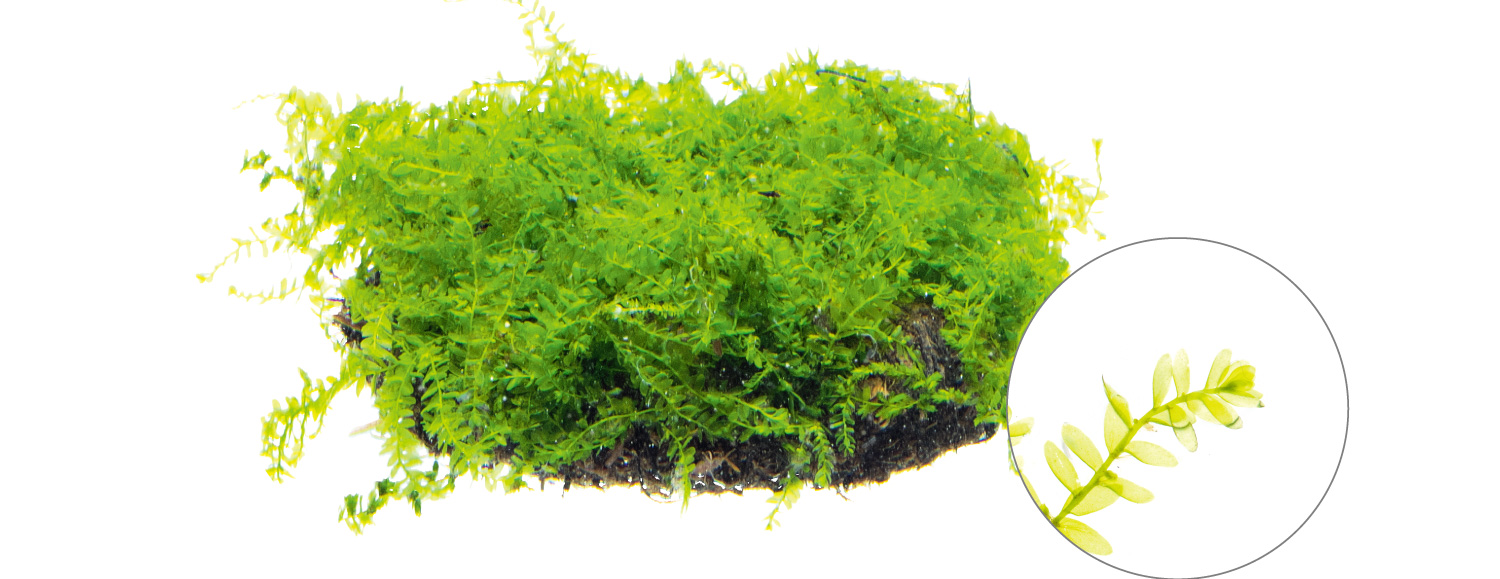
●Hydropogonella gymnostoma
Because its stems are long and well-branched, it is easy to increase volume and gives a soft fluffy impression. It is also known as Queen Moss, and if you look closely at the leaves, they are egg-shaped and adorable.
Because its stems are long and well-branched, it is easy to increase volume and gives a soft fluffy impression. It is also known as Queen Moss, and if you look closely at the leaves, they are egg-shaped and adorable.
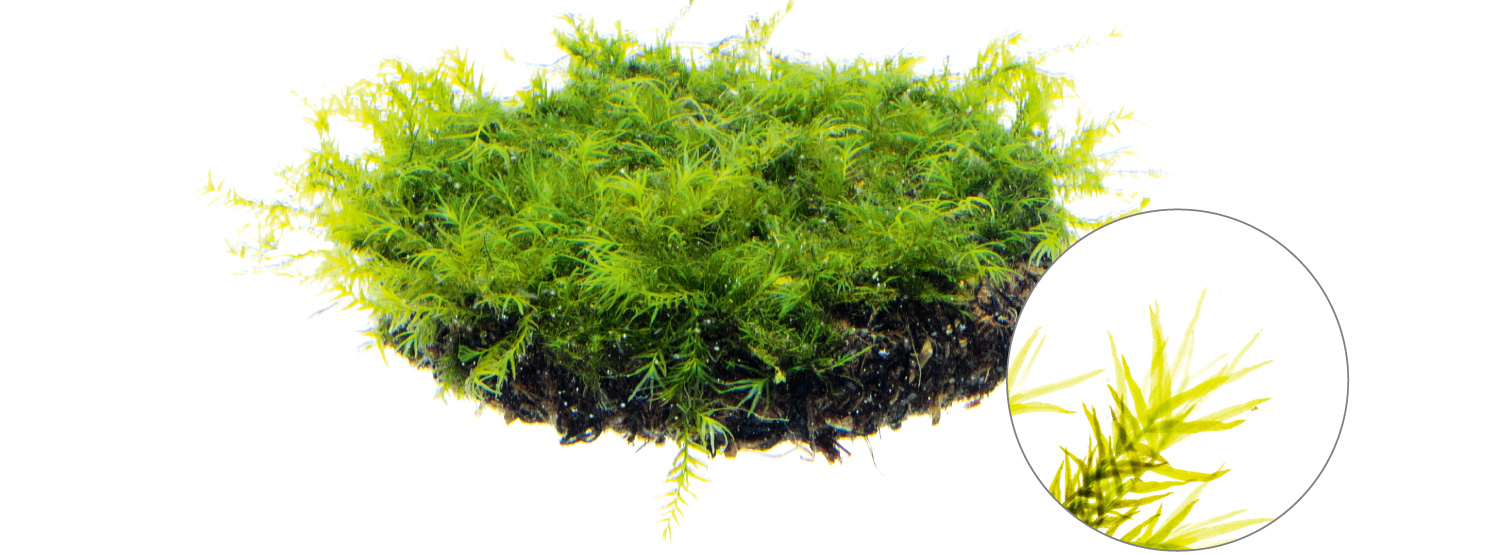
●Fissidens fontanus
The delicate appearance that its sharp leaves create is beautiful like a bird’s feathers as its name suggests. The point is to wind it thinly. Because it becomes like a dome when it’s fully grown, it is indispensable to suck out sludge.
The delicate appearance that its sharp leaves create is beautiful like a bird’s feathers as its name suggests. The point is to wind it thinly. Because it becomes like a dome when it’s fully grown, it is indispensable to suck out sludge.
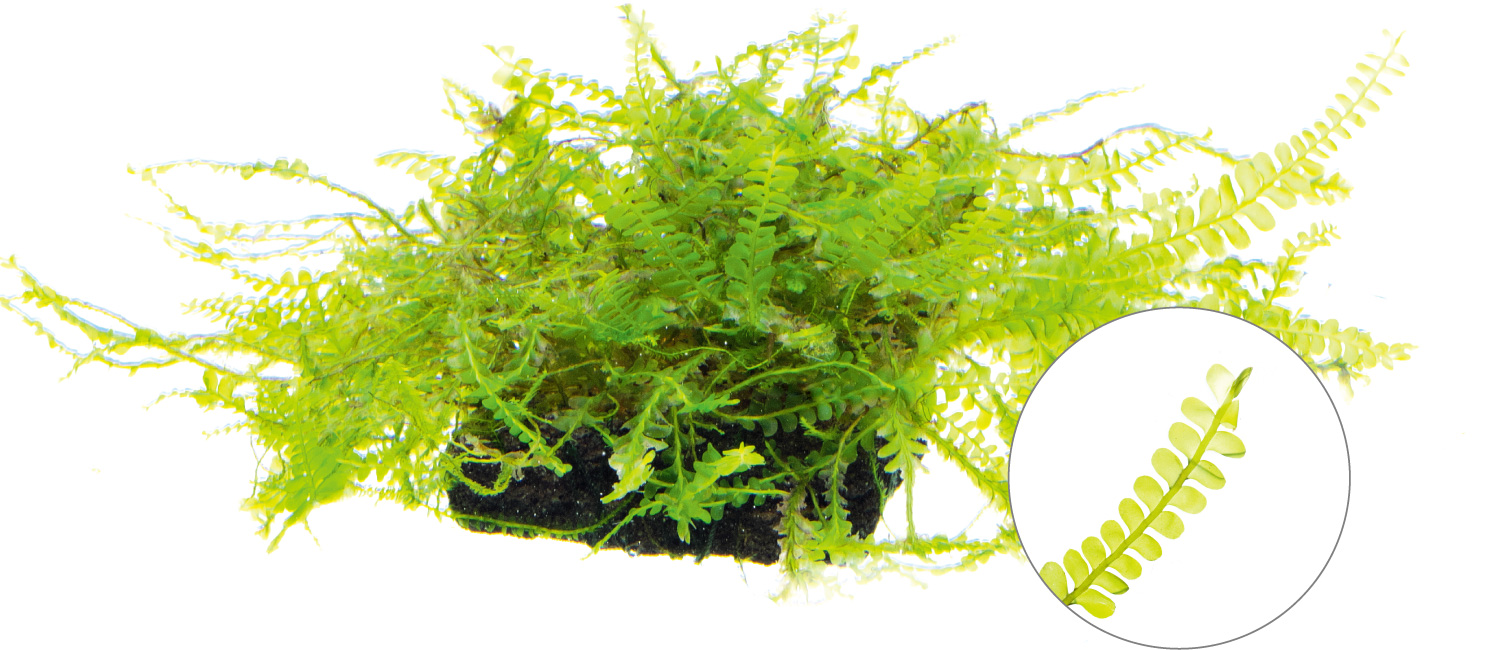
●Heteroscyphus argutus
It is commonly seen in Japan, and it might be growing mixed with Chiloscyphus polyanthos in a spring river. It should be fixed with Terra Line because its growth is as slow as Plagiochilaceae sp. ‘Cameroon Moss’ in the same family. It is also suitable for Aqua Terrarium.
It is commonly seen in Japan, and it might be growing mixed with Chiloscyphus polyanthos in a spring river. It should be fixed with Terra Line because its growth is as slow as Plagiochilaceae sp. ‘Cameroon Moss’ in the same family. It is also suitable for Aqua Terrarium.
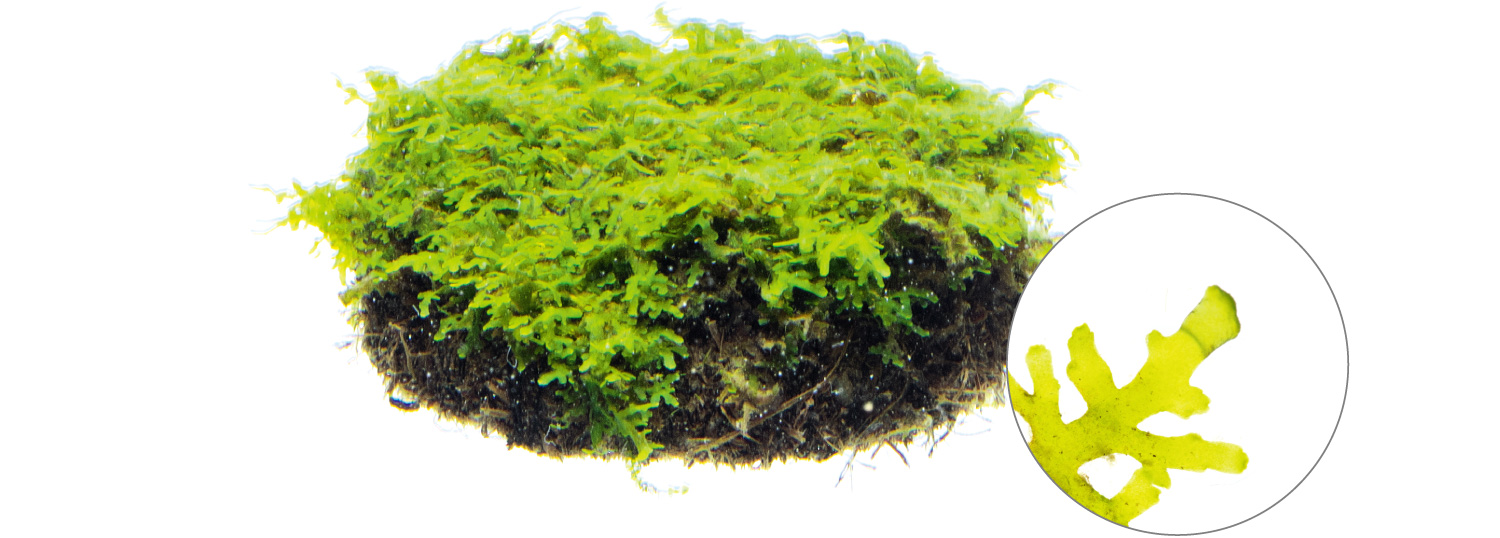
●Riccardia chamedryfolia
Riccardia chamedryfolia is considered as a moss in aquariums, but it is actually in the same group of liverworts as Riccia fluitans. Because it’s easy to fall apart, it should be wound it with Terra Line in a lattice pattern. It grows gradually, and it is recommended for small aquariums because it’s hard to spread sideways.
Riccardia chamedryfolia is considered as a moss in aquariums, but it is actually in the same group of liverworts as Riccia fluitans. Because it’s easy to fall apart, it should be wound it with Terra Line in a lattice pattern. It grows gradually, and it is recommended for small aquariums because it’s hard to spread sideways.
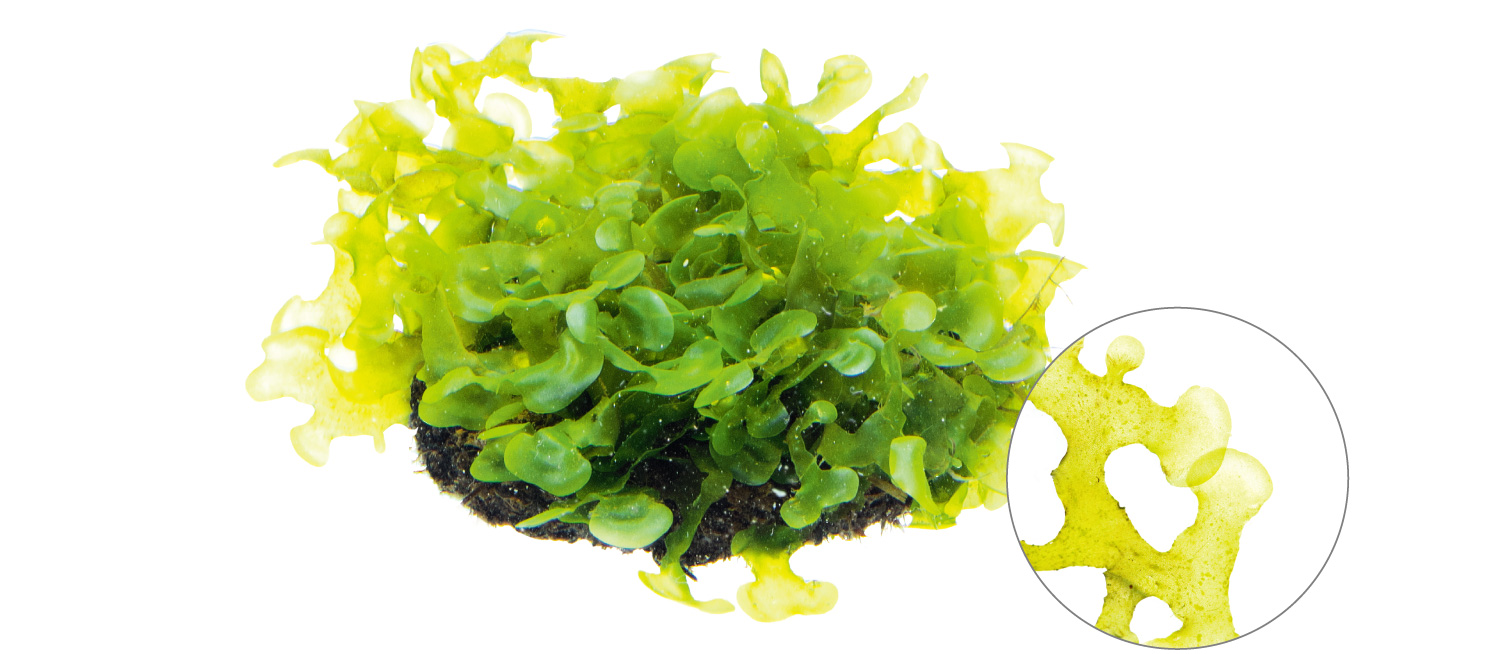
●Monosolenium tenerum
Monosolenium tenerum is also known as Moss Fern. Its fan-shaped leaves spread out while branching. Air bubbles are likely to appear on Monosolenium tenerum, and the way its skeleton leaves perform photosynthesis looks exotic and beautiful. Because it is highly transparent, we recommend that you wind it with Riccia Line.
Monosolenium tenerum is also known as Moss Fern. Its fan-shaped leaves spread out while branching. Air bubbles are likely to appear on Monosolenium tenerum, and the way its skeleton leaves perform photosynthesis looks exotic and beautiful. Because it is highly transparent, we recommend that you wind it with Riccia Line.
*There are various theories about the species names and production areas of mosses that are used in aquariums, and the moss species we listed here are some examples.

![Green Lab. #02 [ Karst Climber ]](https://www.adana.co.jp/wp-content/uploads/sites/3/2025/07/gl02_img_ogp.jpg)
